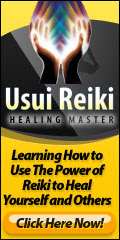8 Scientific Yet Lesser Known Ways To Reduce Pain
By April McCarthy, Prevent Disease
Feeling sore? Here are eight easy — and scientifically sound — ways to relieve your suffering the next time you have an unfortunate encounter with a hammer, drawer or door.
1. Reach for a sweet scent
The sweet scent of roses is enough to cheer anyone up, but pleasant smells also seem to reduce the intensity of a painful stimulus — for women, at least. In a 2002 study, female volunteers had their hands submerged in painfully hot water, and reported less pain when exposed to pleasant aromas, such as flowers or almonds. When asked to sniff vinegar, however, the women’s pain got worse. The effect didn’t seem to work in male volunteers.
Widget not in any sidebars
2. Curse like a sailor
If your first response to a stubbed toe is to swear loudly, that’s not a bad thing, according to research by a team at Keele University, UK. They found that people were better able to deal with the pain of having their hand submerged in icy water when they swore, perhaps because the bad language triggers a hormonal response that lessens pain. Unfortunately it doesn’t seem to work so well in people who already swear a lot.
3. Ginger is your friend
Ginger is one of the best pain killers in the world having analgesic properties like the popular ibuprofen, only better. It contains a quartet, gingerols, paradols, shogaols, and zingerone which are active ingredients to reduce pain. Ginger reduces pain-causing prostaglandin levels in the body. It not only helps chronic pain but also acute. A study by researchers found that when people who were suffering from muscular pain were given ginger, they all experienced improvement. The recommended dosage of ginger is between 500 and 1,000 milligrams per day. Drink ginger tea or place shavings in your foods. Either way will get you relief from that recurring pain.
4. Pick a pretty picture

Penchant for Picasso? Boticelli’s biggest fan? A team of researchers at the University of Bari in Italy found that showing people pictures they found beautiful reduced the pain they felt when a laser burned their hands, and seemed to reduce activity in the brain regions that normally process pain.
5. Cross your arms
Simply crossing one arm over the other has been found to reduce the perceived intensity of a painful laser to the back of the hand. The researchers behind the study, based at University College London, think that putting your limbs in unfamiliar positions essentially muddles the brain and disrupts the pain signal.
6. Listen to music
It’s well known that the right music can heal a broken heart, but it also seems to soothe physical pain. People receiving dental treatment are less likely to ask for anaesthetic if they can watch music videos during the procedure, while people experiencing pain after cancer surgery can cope better if they are played ambient music.
7. Fall in love
It makes the world brighter and food taste better — but being in love can also ease your pain. Just looking at a picture of your loved one can reduce the intensity of holding a painfully hot block. But it has to be real love — pictures of other attractive people don’t have any effect.
8. Touch yourself
In 2010, neuroscientists at University College London found that people were better able to withstand increasing heat applied to their fingers when they touched their heated hand with their other hand. The team say that self-touch reduced the perceived level of heat by 64 per cent — perhaps adopting the foetal position during stomach cramps makes sense after all.
April McCarthy writes for Prevent Disease – check them out for other evidence-based articles




